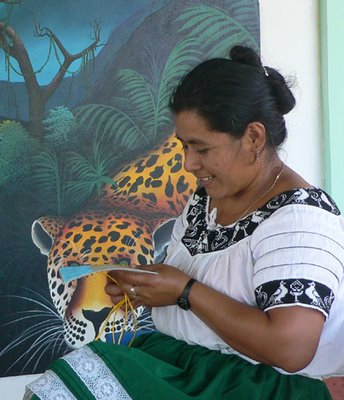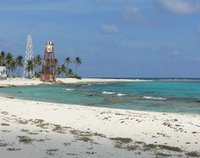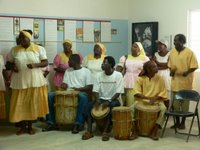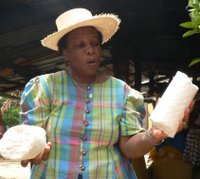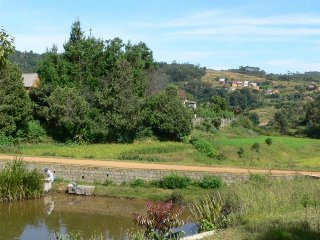Krismus deh rite rung di kaana!
 Christmas is right around the corner. A few updates about what I've been doing lately. I went of a field trip to Half Moon Caye and Blue Hole Natural Monuments last Saturday. The Red-footed Boobies are nesting now and I went snorkeling around the edge of the Blue Hole. On Sunday, I participated in the Belize City area Christmas Bird Count. My group recorded 101 species. Highlights for me were Yucatan Jays (endemic), a great view of an Aplomado Falcon, and a Red-breasted Merganser (listed as an accidental species; I'm not sure how accurate this is but I believe it was the 3rd or 4th record for Belize). After Boxing Day is the Christmas Bird Count for the Belmopan area.
Christmas is right around the corner. A few updates about what I've been doing lately. I went of a field trip to Half Moon Caye and Blue Hole Natural Monuments last Saturday. The Red-footed Boobies are nesting now and I went snorkeling around the edge of the Blue Hole. On Sunday, I participated in the Belize City area Christmas Bird Count. My group recorded 101 species. Highlights for me were Yucatan Jays (endemic), a great view of an Aplomado Falcon, and a Red-breasted Merganser (listed as an accidental species; I'm not sure how accurate this is but I believe it was the 3rd or 4th record for Belize). After Boxing Day is the Christmas Bird Count for the Belmopan area.This week I took a trip to Maya Centre. I led a two-day computer training workshop for the Maya Centre Women's Group, teaching the basics of Microsoft Word and Excel. Mr. Genus and I had dinner with Paul (researcher from the U.K.) who arrived to Cockscomb recently; he will continue camera trap research on jaguars and try to collect hair samples for DNA analysis to better understand population density and dispersal patterns outside the park. The research cabin has no electricity, so we had a candlelight dinner of rice, beans, johnny cakes, and eggs. I spent the night in Cockscomb (it was dark by 6pm felt like much later), listening to crickets and howler monkeys (a nice change from the noise and traffic I hear in the city). Early in the morning I went birding and hiked two trails in Cockscomb. Along the Tiger Fern Trail I encountered this beautiful heliconia (the flower pictured above), I also encountered some peccaries, and fresh Ocelot tracks in the mud. Had a few rain showers, but the canopy serves as pretty good cover. Went back to Maya Centre in the afternoon and completed the computer training workshop. Back in Belize City now and looking forward to the long weekend. Merry Christmas!

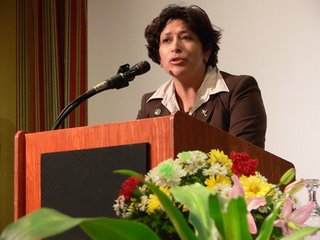
 Heavy rains in Belize City did not stop bus-loads of youth from attending a World AIDS Day event. HIV/AIDS is an epidemic in Belize; the 2004 World Population Data Sheet indicates that outside of Africa, Belize has the sixth highest prevalence of HIV/AIDS in the world.
Heavy rains in Belize City did not stop bus-loads of youth from attending a World AIDS Day event. HIV/AIDS is an epidemic in Belize; the 2004 World Population Data Sheet indicates that outside of Africa, Belize has the sixth highest prevalence of HIV/AIDS in the world. I heard about the event from a Peace Corps Volunteer who works with the Belize Red Cross. The Belize Red Cross was involved in the first national response and continues to participate in advocacy, providing information, training, technical assistance, food and clothing.
I heard about the event from a Peace Corps Volunteer who works with the Belize Red Cross. The Belize Red Cross was involved in the first national response and continues to participate in advocacy, providing information, training, technical assistance, food and clothing. 